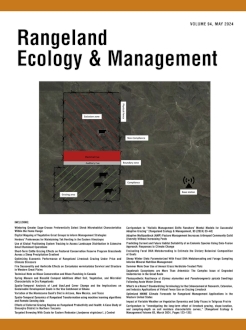In light of climate change, ranchers need management tools to restore dry grasslands. To boost productivity and resilience, compost applications have shown promise, but little is known about the effect of composts that differ in initial feedstock and resulting biological and chemical characteristics. Our objective was to compare commonly available composts to evaluate how they affected soil microbial community composition and soil health–related responses in drylands. We added biosolid versus manure composts to 64-m2 plots in a rangeland in Socorro County, New Mexico and measured microbial, soil, and plant characteristics after 6 mo and 1 yr. We found that while composts hosted diverse microbial taxa, relative abundance of native soil microbial communities did not shift dramatically from controls at either 6 mo or 1 yr after compost addition. Aggregate stability was 22% lower in manure than biosolid compost and controls (P = 0.048), but aboveground biomass tended to strongly increase depending on exclosure treatment (P = 0.048), and composition shifted to relatively abundant annual forbs with biosolid compost compared with controls. Together, these results suggest that while increased organic matter enhanced vegetation biomass, an important implication for range managers, the dominant microbial community members were not primarily responsible for observed shifts in responses.
BioOne.org will be down briefly for maintenance on 12 February 2025 between 18:00-21:00 Pacific Time US. We apologize for any inconvenience.
How to translate text using browser tools
17 May 2024
Spring Manure and Biosolid Compost Additions Affect Soil, Vegetation, and Microbial Characteristic in Dry Rangelands
Julie Bethany,
Steve Kutos,
Kristen Oliver,
Eva Stricker
ACCESS THE FULL ARTICLE

Rangeland Ecology and Management
Vol. 94 • No. 1
May 2024
Vol. 94 • No. 1
May 2024
aboveground biomass
bacteria
compost
Fungi
soil




